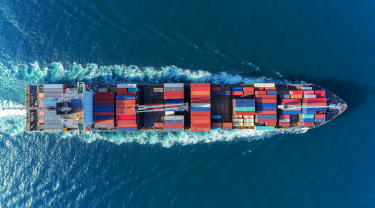Understanding international sales tax
As an exporter, you have no choice: You need to learn the intricacies of taxation outside Canada to succeed in global markets. Sales tax, especially, can vary widely from the rates, inclusions and who collects and remits the proceeds.
Understanding the sales tax systems in your target market is essential when doing business outside Canada.
Canadian entrepreneurs and local taxpayers are aware of the variations of provincial sales tax (PST), federal goods and services tax (GST) and harmonized sales tax (HST) within our country. But enter a new export market and you’re quickly introduced to other tax structures, including value-added taxes (VATs) and traditional sales taxes, which, depending on the country, come with their own complex set of rules. For example, some taxes apply only to domestic customers, while others affect all buyers.
Tax rates typically range from 5% to 25%; collection methods may differ—from remittance by businesses to direct settlement at point of sale. To be competitive and profitable in a new market, it’s essential to get a firm grasp of that market’s taxation. This article aims to simplify things for you and guide you to expert sources for more information on specific countries.

What’s sales tax?
Sales tax is a government-imposed consumption tax on goods and services that’s collected by the retailer and paid to the government. It’s charged as a percentage of the retail cost of the goods at the point of purchase.
Handling international sales tax: The basics
Whenever possible, a Canadian business exporting goods to a foreign country should structure the sale so the foreign customer imports the goods—particularly, if they’re a business. This allows the Canadian vendor to avoid paying any unrecoverable foreign sales taxes or duties on the importation of the goods.
In some cases, Canadian exporters may choose to register for foreign sales tax regimes, eliminating the need for the customer to be the importer, but that’s only advisable when a Canadian company has a significant number of customers in a particular foreign country.
Importers and exporters generally use Incoterms, which are standard terms used in sales contracts, clearly outlining the roles and responsibilities of buyers and sellers.

Types of sales taxes
There are several different taxes on goods. The most common are traditional sales taxes and value-added taxes (VAT).
Traditional sales taxes
Traditional sales taxes are direct sales taxes applied at the point of sale. To further complicate matters, some countries allow different jurisdictions to impose their own rates of sales taxes, resulting in varying rates within the same country.
Value-added taxes (VAT)
A VAT is a tax that’s added at every stage of a product’s production, manufacturing, marketing and distribution. Canada’s GST is an example of a VAT. Many industrialized countries, including the 27 nations across the European Union, have VATs, but the United States doesn’t.
With a sales tax, the full amount owed to the government is paid by the consumer at the point of sale. With a VAT, portions are paid by the different parties involved in the production and transaction.
Other tax models
- Luxury taxes are imposed on goods such as expensive cars, private jets and yachts. These taxes are charged on items considered non-essential and affordable only to the most affluent consumers. They’re typically calculated on an item’s sale price beyond a certain threshold. For example, a luxury tax on vehicles that cost more than $50,000 would apply only to the amount that exceeds $50,000.
- “Sin” taxes on items such as cigarettes or alcohol are also considered luxury taxes.
- Eco-taxes are taxes governments impose to encourage environmentally responsible behaviour by taxing products, activities or services that negatively affect the environment. These can apply to everything from vehicle fuel to waste management. Canada’s federal gas tax is an example of an eco-tax.
- Digital service taxes are imposed on digital goods and services that aren’t available for free. The EU was an early adopter of this system, followed by 50 other countries, including Canada.
It’s important to research the possibility that your product qualifies under one of these categories in the market you’re targeting.
Examples of sales tax regimes around the world
Canadian exporters should be familiar with the types of sales taxes imposed in key markets, including:
United States
The U.S. is a minefield of sales taxes. There are more than 12,000 tax rates across the country. Each state, with the exception of Alaska, Delaware, Montana, New Hampshire and Oregon, has its own tax with rates varying from 2.9% to 11.5%. Within states, municipalities, counties and other jurisdictions can also apply their own rates, while some states, like Arkansas, have no state tax, but local rates.
The U.S. currently has no federal sales tax system. That means a Canadian exporting goods to the U.S. doesn’t generally have to pay sales tax on the importation. Most states apply what’s known as the “economic nexus” rules. These rules apply to out-of-state sellers, who pass certain sales thresholds (total dollars and/or total number of transactions) over a defined period (typically, 12 months).
George Silagadze, CEO of Photo2Painting, a company that transforms digital photos into custom paintings, admits the U.S. market is complicated.
“When we looked at the U.S., what stood out was how varied sales tax is from state to state,” he says. “We had to understand the concept of nexus, which says if we have a physical presence in a state, we may have to collect sales tax there. This made things complicated, but once we understood it, we could plan accordingly.”
European Union
As mentioned previously, a VAT system applies tax to all transactions in a supply chain, although there are always exceptions. Like our GST, businesses that end up paying VAT can apply for reimbursement. Here’s how VAT works in the European Union:
- The application of the VAT varies between EU member states, but all are bound by a common set of rules laid out in a legal framework known as a VAT directive. Rates range from 17% to 25% with some goods qualifying for reduced rates. Using the HS (harmonized commodity description and coding system) number is a good idea because it ensures officials around the world apply the correct tax rates.
- The VAT is collected on the importation of goods into EU countries. Given that, Canadians who export to the EU should try to structure transactions as businesses-to-business (B2B), so the purchaser in the EU country is the importer of the goods. In that scenario, the VAT paid on importation will generally be fully recoverable by the purchaser, so it’s a win for both parties.
- If a Canadian exporter sells goods directly to consumers, they’ll likely incur unrecoverable VAT on the importation of the goods. As an exporter, it’s important to include the VAT (and potential duties) you’ll incur into the price of your items.
Chris Bajda, managing partner at GroomsDay, which specializes in quality gifts for groomsmen, advises that in the EU, VAT registration in each member state is crucial.
“We used the one-stop-shop (OSS) system to simplify VAT filings across multiple countries,” Bajda says. “This approach reduced administrative burden, allowing us to focus more on growing the business.”
United Kingdom
Like the EU, the U.K.’s system operates with a standard rate of 20%, a reduced rate of 5% and a zero rate. Which rate applies depends on the item being exported. There are also exemptions for certain goods, including insurance and financial services, education and training services and admissions or fees for fundraising events by charities.
For Canadian exporters, there’s little difference between the pre- and post-Brexit U.K. Again, Canadian vendors should structure deals, so the purchaser is the importer and pays (and is reimbursed later) the VAT. When that won’t work, Canadians should price their products to include the VAT they’ll have to pay.
“Registering for VAT and understanding import duty variations were key for us,” Badja says of working in the U.K. before and after Brexit. “We adjusted pricing strategies to absorb these costs.”
Other notable examples
- Japan has a VAT with a general rate of 10%. A reduced rate of 8% applies to food and beverages (excluding alcohol and restaurant food) and newspaper subscriptions meeting certain criteria. Again, the same advice applies as with the other markets discussed above.
- Badja says it’s paramount that exporters understand the rebate system for tax paid on inputs. “Partnering with a local tax adviser was essential for us to navigate these regulations and maximize refunds,” he says.
- Australia has GST, which is also a 10% VAT and registration for it is mandatory if annual sales there exceed AUD75,000.
- “We claimed credits for GST paid on inputs, which required meticulous recordkeeping and regular audits to ensure compliance and accuracy,” he says.
- China has a VAT with the same general protocols and advisable practices as other countries.
When in doubt, use local tax experts
Sales tax is an important and complex consideration for all Canadian exporters. It differs by industry, product, country and region, making it challenging for exporters, particularly those new to exporting.
Badja recommends engaging tax consultants in each of the regions discussed and you can find further information on that by contacting us at EDC.ca.
For Badja’s company, the advice he received from those he consulted, “was crucial for compliance and optimizing our tax strategy.”
If you’re having trouble navigating these complexities, EDC provides personalized support and guidance tailored to your unique business needs. EDC’s experts can help you with all aspects of international trade, including everything you need to know about navigating complex tax systems in your target markets.
This content was partially created using generative artificial intelligence (GenAI).



